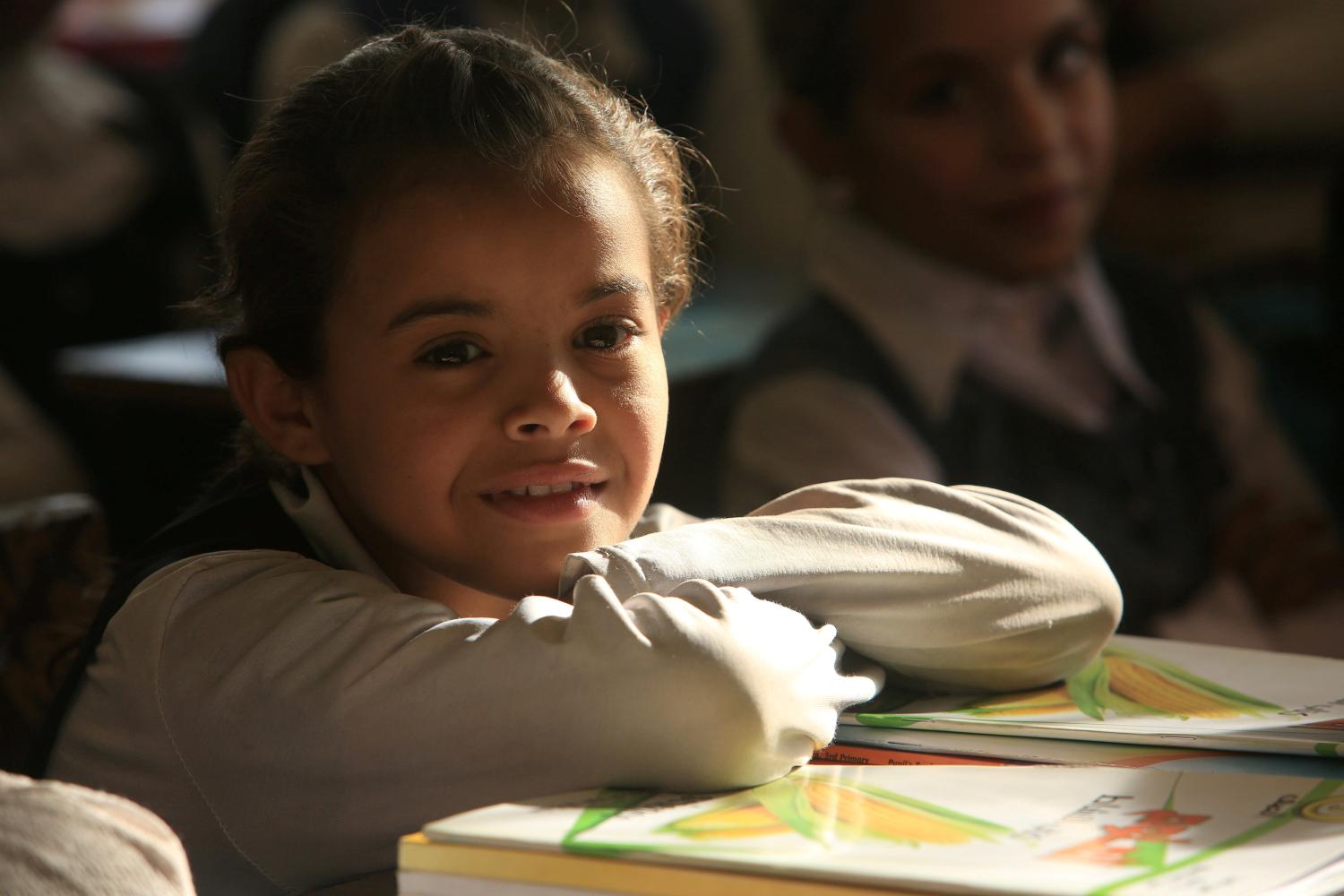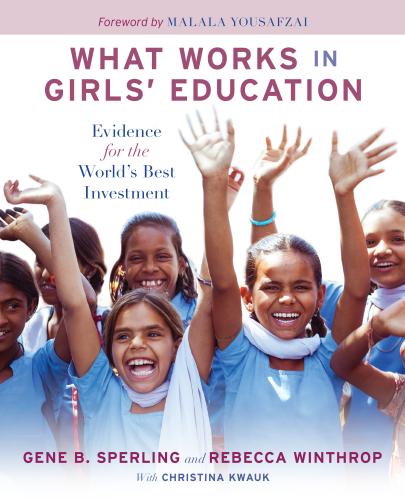Progress in girls’ education has been one of the success stories in women’s rights and global development of the past 20 years. Since 1990, when only half the girls living in low-income countries were in school, the number of girls in primary school increased two and a half times by 2012—from 23.6 million to nearly 63 million—and today 80 percent of girls in low-income countries are enrolled.
As leaders are convening for the U.N. general assembly in New York this week, in part to discuss progress and remaining challenges in human development, it is useful to look at where girls’ education stands today. We have looked at three sets of data: enrollment in secondary school, incidents of violent attacks on girls’ education, and child marriage. The data reveals interesting things, including places where high rates of child marriage appears to coincide with gender parity in secondary school enrollments, as well as areas where girls are outnumbering boys in school.
Ultimately, what becomes clear in looking across these three sets of data is the band of countries across Asia and sub-Saharan Africa that are girls’ education hotspots. These are places where many girls are married before they are 18, struggling to enroll in secondary school in the same number as boys, and in at least 15 countries facing attacks on their lives for participating in education.
Gender Parity in Secondary School Enrollment, 2012

In most countries, girls and boys are enrolling in secondary school in equal numbers. However there are places where they are not. In 51 countries, highlighted in blue on the map, girls are actually outpacing boys and there are more than 104 girls for every 100 boys enrolled in secondary school. In a small number of countries, notably Lesotho, Suriname, Honduras, Armenia and Cape Verde, boys are severely disadvantaged. In some of these places, particularly in Latin America, experts attribute this to the growing prominence of gangs and violence, something which frequently hits male youth the hardest and results in higher dropout rates for boys than girls.
There are places, however, where girls are still lagging far behind boys. Largely located in Africa and Asia, there are 56 countries where there are fewer than 97 girls enrolled in secondary school for every 100 boys. What is especially worrisome are the 23 countries, seen in dark red, where girls are severely disadvantaged and have less than 85 girls per 100 boys enrolled. This means that while there is nearly the same number of countries where girls are disadvantaged and where boys are disadvantaged; there are nearly four times the number of countries where girls are severely disadvantaged than where boys are severely disadvantaged.
Countries with Attacks on Girls Education since 2009

There are at least 15 countries where girls’ education in particular has, since 2009, been subject to attack. The range of violence and attacks on girls and their schools and teachers includes kidnappings, bombings, torture, murder, and rape, among others. For example, the cited violence ranges from school girls being abducted in Somalia, to students being raped and harassed by armed groups in Colombia, the Democratic Republic of Congo, and Libya, to schools and buses being bombed and gassed, parents and teachers being threatened with gas attacks and outright bans on girls’ education in Afghanistan and Pakistan. In these countries, many girls are literally risking their lives to go to school.
Hotspots for Child Marriage, with Gender Parity in Secondary School Enrollment

Using the United Nations Gender Statistics database on child marriage, which uses demographic surveys to estimate the number of women between 20-24 years old who report being married or in a union before the age of 18, this map plots the prevalence of child marriage against gender parity in secondary school enrollment in the most problematic regions. Here the circles’ sizes represent the percentage of women married before 18, and the colors represent the level of gender parity.
Interestingly, there are countries like Bangladesh where child marriage is prevalent, yet girls still are more likely to attend school than boys. One explanation for this is that the data on child marriage is not as up-to-date as that on enrollment. In the case of Bangladesh, the latest data we have on child marriage refers to women who were 20-24 years old in 2007, versus enrollment data on secondary school from 2012. The measures on child marriage are far too outdated for such an important issue affecting millions of girls, and new, better data needs to be collected.
However, despite these countries where girls are enrolling in secondary school in equal numbers as boys, we see a clear pattern in Africa for countries that have low female participation in education and high early marriage rates. In Niger, for example, 75 percent of girls are married before they are 18, and in secondary school there are only 67 girls for every 100 boys. Guinea, Burkina Faso, Mali, Chad, Central African Republic, Ethiopia, Uganda and Somalia show similar figures, running in a band of large, red circles across the continent.
Taken together the data on gender parity, attacks on education and child marriage point to very clear hotspots for girls around the world who, despite global gains in girls’ education, still don’t have the opportunity to safely attend school.
This blog post was updated on 10/2/2014.
The Brookings Institution is committed to quality, independence, and impact.
We are supported by a diverse array of funders. In line with our values and policies, each Brookings publication represents the sole views of its author(s).







Commentary
Girls’ Education Hotspots: A Look at the Data
September 22, 2014